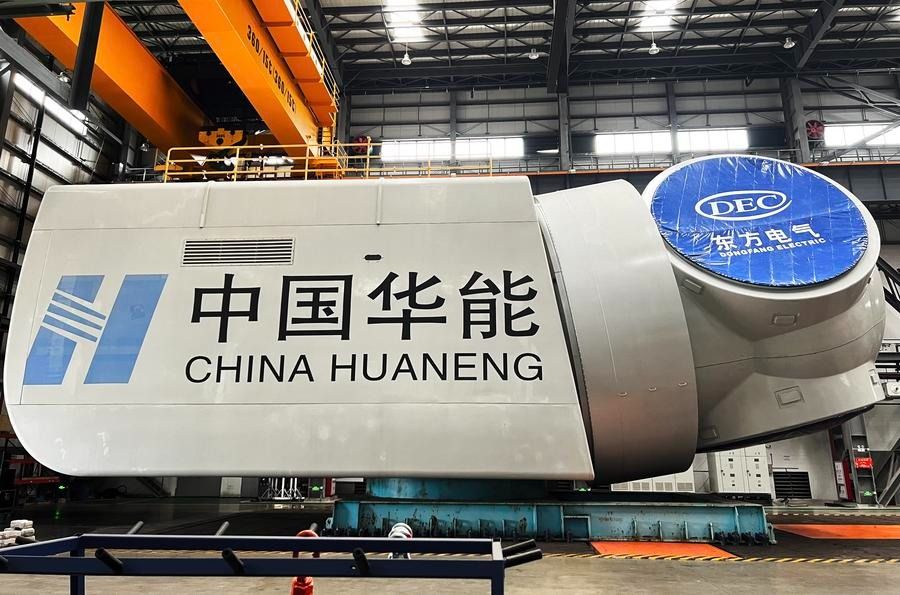
BEIJING: China has taken a significant leap forward in renewable energy technology with the unveiling of the world’s most powerful direct-drive floating wind turbine. This remarkable achievement, jointly developed by China Huaneng Group and Dongfang Electric Corporation, was officially announced after the turbine rolled off the production line in the coastal city of Fuqing, Fujian province.
The 17-megawatt turbine, capable of generating 68 million kilowatt-hours of clean electricity annually, is sufficient to power approximately 40,000 households. This development marks a critical step in China’s efforts to harness offshore wind energy, with real-world testing scheduled in the waters off Yangjiang, Guangdong province.
Engineering Marvel with Record-Breaking Features
The turbine’s design boasts an operational availability rate exceeding 99 percent, featuring a 262-meter rotor diameter and a swept area of about 53,000 square meters—comparable to 7.5 standard soccer fields. Standing at 152 meters, its hub reaches nearly the height of a 50-story building.
Designed to withstand extreme maritime conditions, including waves over 24 meters and typhoons at level 17, the turbine incorporates unique stabilization technology. This allows for continuous power generation even when the floating platform tilts at extreme angles. Liu Xin, director of the offshore wind division at China Huaneng Clean Energy Research Institute, emphasized the turbine’s adaptability, highlighting its integrated intelligent sensing system for stability control in complex deep-sea environments.
Technological Breakthroughs and Domestic Innovation
The project team achieved significant technological advancements, particularly in floating wind power system coupling simulation and high-fidelity model testing techniques. Notably, all core components, including blades, generators, and transformers, are produced domestically, featuring China’s first large-diameter main shaft bearing.
This breakthrough opens new avenues for tapping into China’s vast deep-sea wind resources. According to the National Development and Reform Commission’s energy research institute, while nearshore waters offer approximately 500 GW of technically developable wind capacity, deep-sea resources are estimated to be three to four times larger.
Data from the Global Wind Energy Council (GWEC) highlights that over 80 percent of offshore wind resources are located in waters deeper than 60 meters.
Global Implications and Future Prospects
The introduction of floating wind power technology is set to unlock the potential of deep-water wind energy globally. According to the GWEC, the global installed capacity of floating wind power is projected to reach 278 megawatts by the end of 2024, with Norway, the United Kingdom, China, and France leading the market.
This development comes as countries worldwide intensify efforts to transition to renewable energy sources. The move represents a significant milestone not only for China but also for the global renewable energy landscape, as nations strive to meet ambitious climate goals and reduce reliance on fossil fuels.
As the world grapples with the challenges of climate change, innovations such as China’s 17-megawatt floating wind turbine underscore the critical role of technological advancements in shaping a sustainable future. The successful implementation of such projects could pave the way for similar initiatives worldwide, further accelerating the shift towards clean energy.
Looking ahead, the focus will likely remain on enhancing the efficiency and scalability of floating wind technology. As more countries explore their offshore wind potential, the lessons learned from China’s pioneering efforts could prove invaluable in guiding future developments in the sector.





